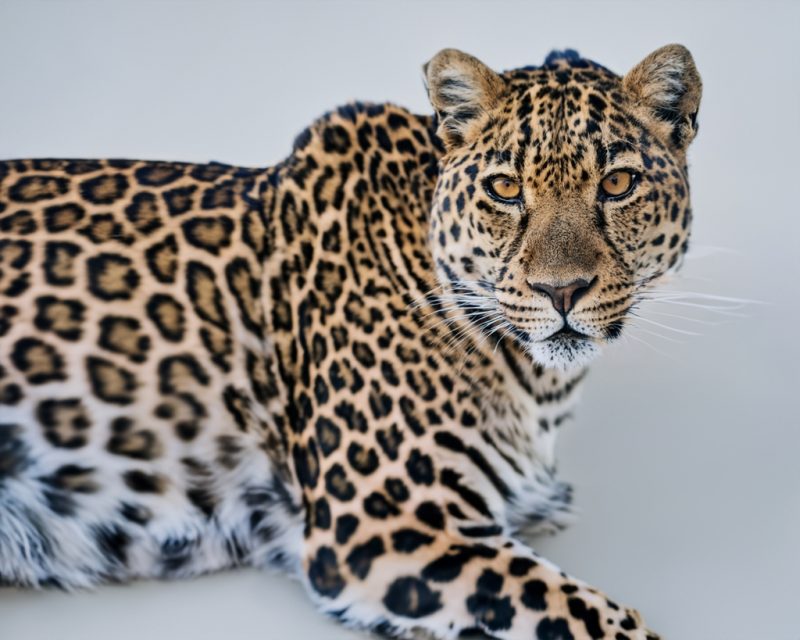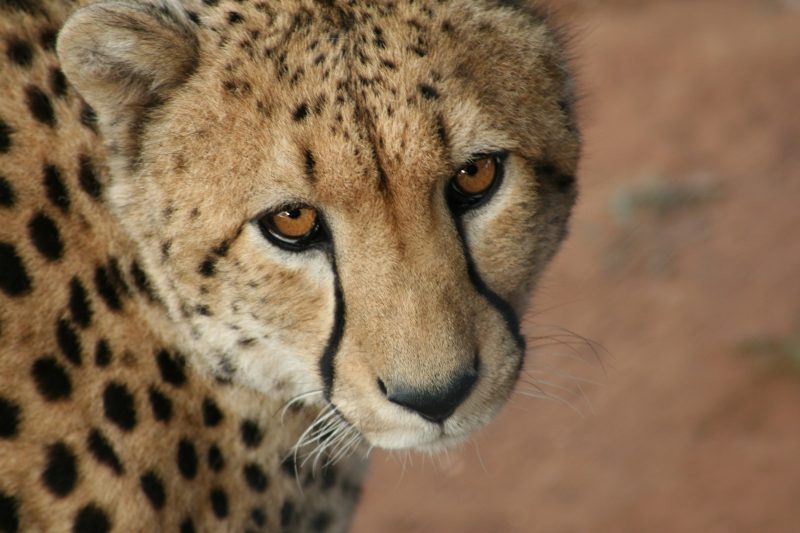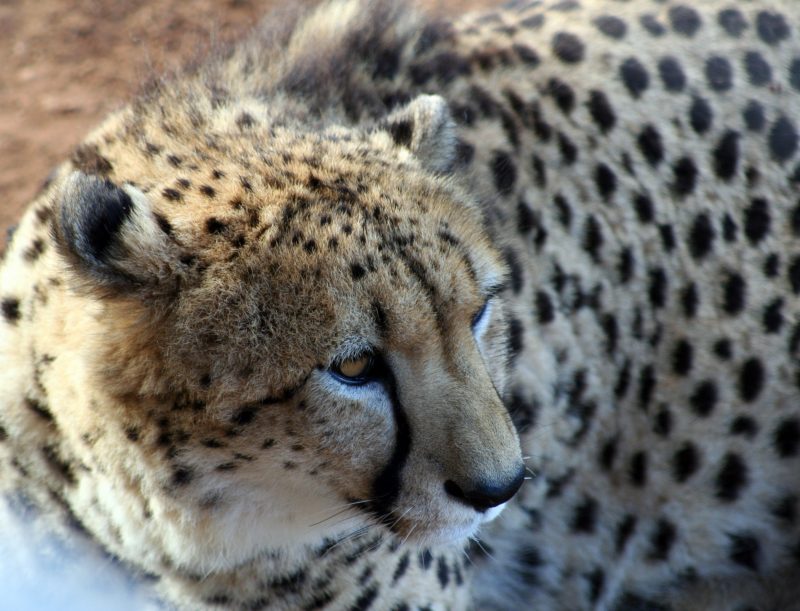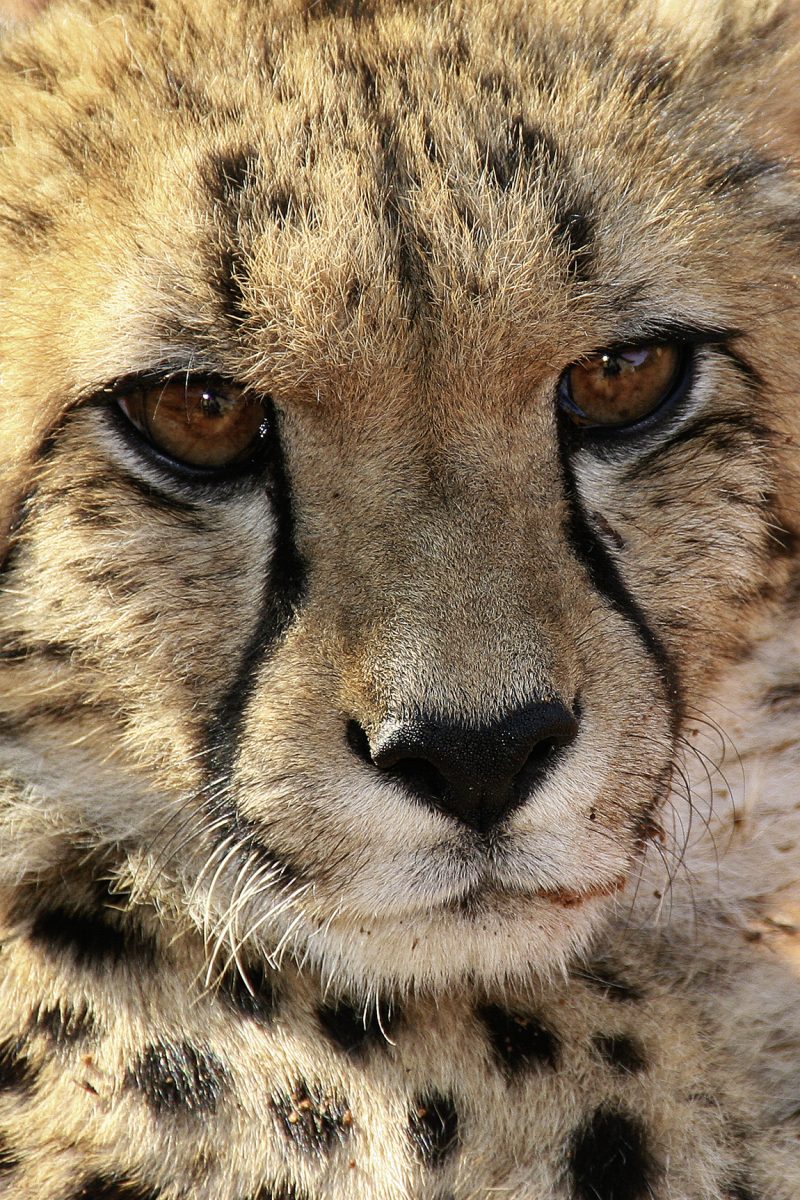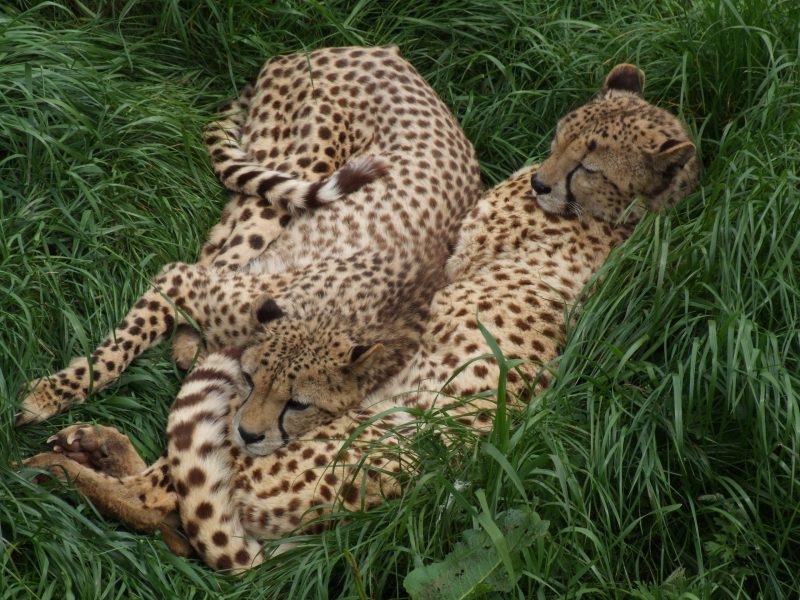Travel To Kenya To Get To Know The Cheetahs
Clan
Cheetah does not belong to the big cat clan because they cannot roar due to the absence of hyoid bone in its throat. But it does belong to the Felidae clan and is a distinct member of it. Although it closely relates to bobcats, pumas and lynxes it simply differs from them. So, it belongs to a Lesser cat, the greyhound of cats, and is the only member of the genus, Acinonyx.
Growth
The oldest species of the fat cats have been in being and have grown for around 4 million years. This large, strong and the most lovely meat eating feline is indeed a marvel of growth. Cheetahs have come a long way not only in its progress track but also in the way human beings treated cheetahs in the past and in recent history and the effect human intervention has had on this beast’s life. Cheetahs, with their lightning speed of 75 miles per hour and striking markings, are one of the most moving species on planet earth. People have retold this fact very often but seldom valued it.
Vital data
Most cheetahs weigh around 120 to 140 pounds with a shoulder height of about 35 inches. From head to rump they are 4.5 feet long, and their tails add an extra 31.5 inches.
Spotted coat
The cheetah is tall and chic in looks. As one of the trademark features, it has short and coarse fur that is gold or yellow with solid round black spots about 0.75” to 1.5” in span all over its body. The spotted coat helps it blend with its natural abode so that it can stay hidden. Interestingly, cheetah pelt is coarse and rough and not smooth and silky, as it appears to be. And the shade of colour towards the belly, front and throat is creamy and white with no spots.
Black stripes
Apart from its unique coat, the main feature that makes cheetah is the unique black stripes. They stretch from its eye’s corner to the side of its nose all the way down to the outside of its mouth. The stripes protects the animal from sunlight and helps it focus on its prey as they act as a riflescope.
Sounds to talk
Roaring is a usual sound of almost all the cats, but the cheetah is the only big feline cat that cannot roar. Instead, it makes sound through a loud purr much the same way as a household cat. But, just because it does not roar like the other wild cats, it does not mean that cheetah is not a vocal beast. Quite the opposite. It can mimic some calls of birds, by making a chirping sound called chirrup. It makes this unique bird sound when it is excited about something or when calling their cubs. You can hear this yelp from miles away. Any bird that hears these aping sounds and falls for this wrong call also falls prey to the cheetah. Charmingly, besides the bird sounds, cheetahs talk in many other diverse ways too. Some of these are through the common animal language such as bleats, barks, growls and hisses. Another non-verbal and action-based way of passing of messages is through marking. It marks its territory through urine, licking or by chin- and cheek-rubbing. Actually, saliva contains the same chemical data as urine.
Taste and thirst
As a truly hard-core meat eating beast, the cheetah in the wild depends on meat for survival. Although cheetahs have a slender and slim body, they have an avid taste. They can consume about 8lbs of food on a daily basis and enjoy every bit of the morsel. The diet consists mainly of steenboks, springbok, duikers, kudu, zebras, gazelles, hartebeest, Oryx, roan, wildebeest and smaller hoofed animals. Also, it may eat smaller ones such as rabbits, birds, hares and warthogs. But, the most preferred by the cheetah and its pet is Thompson’s gazelle. There is something about Thomson’s gazelle meat that makes the stomach of the cheetah rumble. And mother nature has made sure that there is never any lack of these beasts in the wild. As far as liquid intake is concerned, these cats lead a dry lifestyle, as water can be very scarce in the bush. So, cheetahs have the skills to survive with just one drink every 4 days. Sometimes they can go on for as long as 10 days in the wild without drinking a drop of water. Despite the richness of food and the its adaptability to go for long without drinking water, their range and numbers have decreased very much.
Natural abode range
Cheetahs occur mostly in partly open grassy bush plains, grasslands, scrub forests, semi-arid deserts and sometimes even hilly terrain with plenty of areas to run or roam after their prey. The semi-desert and open land of grasslands better suits its way of hunting, which is not the stalk-and-pounce method but running. For this reason, cheetahs like vast dry grasslands where they have enough room to chase and kill their prey. They also rely on tall grasses in the bushy plains for hiding while stalking the aimed prey. Hence, they mostly hang around in areas that have dense shrubs where they can quickly locate their foods.
Females
When the young female cheetah reaches sexual age at 2, she leaves her brothers and sisters and lives on her own although she stays so close to home that she overlaps the land with her mother. Studies and research indicate that female cheetahs are loners. Funnily enough, mating season is the only time that they cozy up with other cheetahs. And they stay very close to one another when raising their cubs solely for about a year.
Males
Male cheetahs mature faster than females and are ready to mate at the age of 1. Unlike females, males are very happy to travel as far away from home as they can and lay claim to a land. They are more fun than girls and sometimes live with a group of brothers or outsiders called leagues to defend more land, although they are very picky about with whom they hang out. They are often hostile towards each other when battling to mate, but they will make peace with another larger beast by giving up their catch. Due to constant fights between leagues, the ratio has reduced to 1 male for 2 females.
Making babies
Cheetahs engage in a act called polygyny, which means during its lifetime male and female will mate with diverse members of the other sex. Unlike most other wild cats, cheetah mates throughout the year without a set or regular breeding season. But, most of the breeding occurs during times when there is a better supply of food. Females can mate with diverse males within a few days and have many fathers for the cubs in the same litter. The pregnancy period of a female cheetah will only last for about 3 to 4 months. If the mother loses the the litter within the 1st few weeks, she will come into oestrus very soon.
Clan role
In the cheetah family, it is the tamed females who take up the lion’s share of bringing up the cubs and forming clan links. The male’s role starts and ends at mating. Apart from mating, males neither have any clan function nor do they have any feelings for or bonding with the pregnant mother or the cubs. After mating and during the gestation time, the male cheetah will neither stay with the female nor take part in the rearing of the young. Lack of a conscience in the wild kingdom may perhaps be the reason.
Cubs
After pregnancy, the female cheetah gives birth to a litter of around 3 to 5 cubs that are born blind. The largest litter of cheetahs noted so far in the record of wildlife is a top of 8. The cubs weigh around 50 to 60 ounces, with a length of about 11.8”. They are grey in colour with long, thick silver-grey woolly hair running down their backs to the rump. The mantle makes the cubs look like honey badger. It aids in hiding and masking them in the tall grass from killers since they are actually in danger of attack. This mane like feature goes off after 3 months. And the fur evolves into mature colours by 4 months. After giving birth, the weaning period of the cubs lasts for 6 to 8 weeks. Mothers move the young ones to new places every few days to hide the smell of her children from killers.
Danger
Even under a mother’s watchful eyes, 90% of the young still die before they reach 3 months. About 50% of the deaths occur because lions, jackals, hyenas and even birds of prey often eat them up. This tragedy occurs mainly when the mother leaves them, to find food not only to feed them but also to sustain her in her nursing stage. Sometimes she will even wait until night-time to return so that other large killers do not follow her and tumult the safety of the young ones. Even if the mother was near, she might not be able to fend off a large beast because cheetah is not good for fighting but for running in the wild world. The reason for the failure of the rest of the 50% to survive is a lack of innate diversity. This genetic peril causes weak and immature immune system. Illness and disease attack a weak immune system, which in turn causes death. Most of them do not even make it past 1 month when this is the case. All of these leave the cubs helpless.
Neglect
The mother can be away for as long as 2 whole days. If the food supply is scarce, then she even leaves her young wholly to maintain herself. And if a baby loses its 1st clan for any reason, it will join another clan. After leaving the mother cheetah around the age of 1, siblings stay together for 6 months.
 Speed
Speed
Cheetah is the world’s fastest land beast. A wildlife safari in Kenya is never complete without spotting the fastest running beast in the world. A running cheetah at its top speed while on a wildlife safari in Kenya is not a rare sight. It is famous for its high speed when in a chase. But, film-makers film cheetahs only for the creature’s splendour and downplay its speed. But the BBC bucked the trend in its show The hunt with aerial shots that reveal that cheetah can reach top speeds in no time. In fact, within 3 seconds it can speed up to 60 to 75 miles per hour ranging a distance of 1,600 feet.
Sturdy body traits
The cheetah’s slender body frame is both sleek and lightweight. This body feature along with its agile spine, long thin legs, semi-folding claws and long tail makes it uniquely suited for great strides so that it to can achieve the unreal top speed.
Slender body structure
The cheetah’s fluid body is full of very light bones. With broad chest, narrow waist, loose hip joints and a slim well-muscled frame it can cover around 25 feet in one stroke. And, the hips pivot allowing the hind legs to stretch apart to the top level when pulling the body.
Sprightly agile spine
The extreme litheness of the spine is unique making it agile and allowing it to sprint quickly. The spring-like spine gives extra reach and more room to the long legs while running. The traits of the spine with its large liver and inner organs enable rapid response, which perfectly suits its way of hunting.
Long thin legs
The cheetah’s unique fleshy rear legs mainly consist of twitch fibres to contract faster than normal and allow for a greater swing, adding to the speed. Its extra-large heart, over sized lungs and wide nostrils process more oxygen for sprints.
Claws and pads
A cheetah has blunted semi-folding claws and tough pads on its feet that closely look like that of a dog, designed to dig into the ground to have a good grip on the grass floor at high speed. These features offer the best traction to get to high speeds.
Fine stable tail
The ringed markings along the long thick tail end in a bushy tuft tipped in white or black for a stream lined look. This long tail is a fine balancing aid. It acts as a rudder and helping it to counter balance its body weight while making those sudden sharp turns while in pursuit or changing sides quickly during a sprint. The tail is also a signal device, helping the cubs follow their mothers in high grass.
Far reaching stride
It is shocking to see how even when after the cheetah slows down it runs to regain ground in just a handful of strides. A stride is a distance between two straight imprints of the paws. Twice in a single stride, its body is fully off the ground and up in the air. Once with all 4 of the legs stretched and once with all of them bunched under the body. The unique features of the cheetah enable it to achieve strides of up to 8 meters with 4 strides completed in a second, which is more than a horse. The horse can be easily out run by a cheetah. But this will not last long because while running, the cheetah usually pants too much, and its body heat reaches 105 degrees Fahrenheit. As such, it can only keep up its top speed for just a few minutes before tiring quickly. The sprints rarely arrive at a full minute but only last for 20 seconds. Therefore, the horse would end up wining in the long run.
Who is faster?
Usain Bolt is the sprinter who strangely won the gold medal 9 times at the Olympics. Such was his success that in 2016, Usain Bolt made $33 million in endorsements and prize money. After his many successes, Virgin Media, Hublot were early to sponsor with him, and many more firms have signed on as well. People have often wondered how the record-breaking runner, Usain Bolt, would fare against a cheetah, the fastest running beast on earth. It even has a speed rate greater that of the sports car.
Sarah versus Bolt
Because cheetahs are so fast, taking photos of them at that speed is tough. But the National geographic did it when its channel did a virtual race between Sarah, the cheetah, and Usain Bolt. They were curious to know what would have happened if cheetah took part in the 100m final of the World championship in 2009. The team placed a virtual 11-year-old cheetah named Sarah in the video beside Usain Bolt. When the gun went off, the cheetah zoomed past, crossed the line and shattered the world record for the 100m run in 5.65 seconds as opposed to Usain Bolt’s 9.95 seconds, that makes him look stodgy and sloth-like in contrast. That means Sarah the cheetah oddly finished a full 4 seconds ahead of Usain Bolt. This virtual sprint was the fastest 100m-race so far. Bolt can run nearly 23.35 miles per hour, whereas a cheetah’s time equalled 70 miles per hour.
Outruns Bolt
For the records, Usain Bolt took 9.95 and 19.19 seconds against the cheetah’s 5.65 and 6.9 seconds to run a 100 and 200m-race respectively. It may appear as if the world-famous Usain Bolt may have got all there is in the racing arena. But, beyond a shadow of doubt, cheetah is twice as fast as the top sprinter. Usain Bolt would need a 40m gain to beat the cheetah. In short, Usain Bolt will never outrun a cheetah, the fastest beast in the wild.
Sarah’s home
Ambassador program founder at the Cincinnati zoo, Cathryn Hilker, was the one who raised Sarah from a very young age. On a course established by the Cincinnati zoo, the National geographic magazine photographed Sarah and other cheetahs of the zoo for a feature in one of its issues. For the handlers, technicians and photographers that day was hot, long and challenging. During the day, each of the five cheetahs completed numerous sprints during the photo shoot. It was like a game for the cats, running out of the van and chasing toy dogs. The cheetahs regularly run for the crowds who are eager to witness the spectacle. Over the course, the 100m races ranged from Sarah’s 5.95 seconds to 9.97 seconds. Such periodic demonstrations outside the zoo are beneficial for the individual cheetahs. They get their much-needed exercise. Over the years such outreach programs have helped raise over a million dollars.
Usain adopts a cheetah
Usain Bolt, the fastest runner of the human kingdom, is famous not only for his fastest sprints but also for his fastest pets. He has adopted the fastest sprinter of the animal kingdom, a cheetah. He welcomed into his life a 3-month-old baby cheetah named Lightning Bolt from Nairobi National Park. Kenya Wildlife Service rescued 3 young cheetahs after their mother abandoned them and the adoptee was 1 of them. Lightning Bolt lives at Nairobi’s animal orphanage. Thanks to the generous rescue effort, now Lighting Bolt is part of the famous sprinter’s family. In the past, Usain Bolt was scared of cheetahs. The world record-holder nearly ran away when they asked him to cuddle Sharon, a fully-grown cheetah, for a photo shoot. He only changed his mind when he saw that Sharon was harmless. He further relented after feeding Lightning Bolt, his baby cheetah, with bottled milk while cradling it in his hand. Bolt became more comfortable later as he held his adopted fuzzyheaded cute critter, which was as big as an adult domestic cat. The world record-holder pays an annual allowance to raise the cub formally. Part of the money is protects the country’s at risk species, and part of it goes to Kenya Wildlife Service. This sponsorship of the Jamaican sprinter is an effort to raise awareness and boost the conservation efforts of Kenya’s famous wildlife, whose threats to survival include climate change, trophy hunting as well as growing human population and encroachment.
Speed aids hunting
The cheetah utilizes its speed for hunting its prey, which lasts from 20 to 60 seconds. Although it is able to hunt its prey, only half of the chases are successful because it tends to lose them to other predators and sprints away from danger instead of injuring itself. The other half is life lessons learned the hard way.
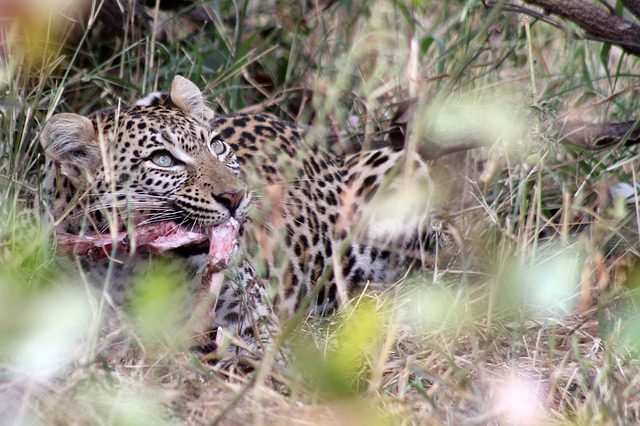 Selective prey
Selective prey
The reason why cheetahs are safer than other big cats is that unlike others, cheetahs are rather selective about the prey they hunt, and they kill only by biting the neck. But they do not bite more than they can chew. Besides, cheetahs do not possess the muscles of other fat cats.
Learning to hunt
During the weaning period, the females will not only feed the young and protect them from predators but also teach them how to search for prey among other essentials. At 5 to 6 weeks, the mother takes them along with her on chasing trips. Slowly, the cubs start eating from the kills. Eventually, the mother will bring home live injured prey so that the baby cheetah may practice the art of hunting. Around this time, they are also playing with one another, and sharpening their wrestling, stalking and chasing skills. At eight months, the young ones are hunting large prey such as giraffes, albeit in an amateur way. It is through observation and participation that the cubs learn hunting techniques. But a cheetah can never be a very efficient and skilled hunter until about three years.
Eyes for hunting
The feral cat is unique among the felines primarily because it is most active during the day. It is diurnal with poor night vision, unlike lions or hyenas, but have exceptional eyesight during the day. So, it prefers to hunt through the daytime hours, mostly either during the early evening or late morning. The binocular vision is a crucial asset in efficient and fruitful hunting since a cheetah relies on sight to hunt and not on scent. The eye’s retinal fovea gives a wide-angled and sharp view.
Surveying for prey
Cheetah is a solitary hunter. It perches upon a rocky ledge or a fallen tree to scope out the potential prey and its surroundings. Wildlife safari travelers to Kenya never seize to be inspired at the sight of a cheetah majestically standing upon a hill or atop an ant mound surveying the landscape for its next prey. The high set eyes on cheetah’s small head along with the short-rounded ears aid them when surveying the grasslands for possible prey. It targets an animal that has strayed, not necessarily the old or weak.
Way of hunting
Cheetahs camouflage themselves against tall grasses while stalking the prey until they are confident of the attack. Then it quietly sneaks up on its prey and leaps out using its tail as a rudder. It then knocks its prey to the ground. Usually, other large wild cats go for the throat straight away in a pursuit. Instead, a cheetah, using its paws, kills it with a suffocating bite on the neck and holds it for as long as 25 minutes.
Way of eating
Soon after the prey dies, the cheetah must devour it lest it loses it to other bigger or more aggressive animals such as lions, leopards or hyenas. But it faces a dilemma. Cheetahs cannot eat its prey right away because by the time it finishes the kill, it is immensely hot from the chase and requires time, as long as a half hour, to cool down before it can feast. The cheetah’s heart rate after a chase is 250 beats per minute, and the breaths are 200 per minute in contrast to while it’s resting when it’s heartbeats are approximately 170 per minute and breaths are 30 per minute. So, the cheetah drags it to a hiding spot. But sometimes even hiding the kill this way does not work, as vultures and other scavengers can steal the food. Nevertheless, if the kill is still intact when done resting it will quickly eat, as it cannot defend the food for a long time. As its food intake is enormous, the cheetah can gulp up the meat of the entire animal in just one sitting. Cheetahs are among the very few wild animals that are seen during a wildlife safari in Kenya eating its prey that they have killed recently.
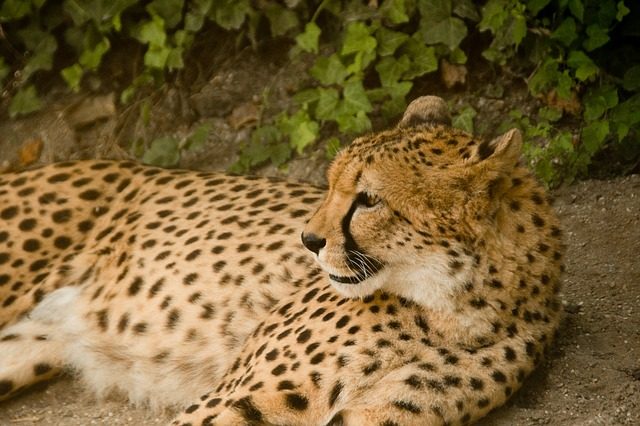 Cheetahs in the past
Cheetahs in the past
The mighty cheetah used to be the most wide-ranging of the wild predators roaming around on land. They were found historically throughout all of Arabian Peninsula, Asia Minor and Africa. Archaeologists have even found fossils in China, southern Europe, northern India and western United States.
On the brink of extinction
Sadly, those times when cheetahs roamed abundantly in the African prairies and jungles have changed. The survival odds of the beautiful cheetah, the fastest running animal in the world, are in danger. The IUCN – the International Union for Conservation of Nature – lists it as an endangered species. Since the past century, global cheetah population has declined, thereby cutting down its habitat by 90%. During the last 18 years alone cheetah numbers have plummeted by 30%. And even the surviving strongholds are very weak with only 7,000 left in the wild. However, this number was simply a guess, given the difficulty of taking an accurate census of cheetah. A new study has found that the number is lower than previously thought. Recent estimate puts the number at 6,600, and their future remains uncertain. Out of that small number, one tenth of them live in captivity in the zoos, museums and conservation centers. According to Cheetah Conservation Fund, an organization that works towards conserving cheetahs, in the 1900s, cheetahs used to be in as many as 44 countries. They are now extinct in 20 countries, occupying only 17% of their historic range.
Distribution range decline
Today, cheetahs occur widely but sparsely in eastern, central and south-western African parks including Zambia, Zimbabwe and Mozambique, but mainly confined to Southern and Eastern Africa. Of all the regions that cheetahs occur across Africa, two areas are of particular significance. They are southern Africa – Botswana, Namibia and South Africa – and East Africa – Kenya and Tanzania. But the largest concentrations are in Namibia and Kenya. Namibia, a south-western African country, is home to the biggest population of cheetah totalling around 2,500. But due to the expanding development and continuous growth of farmland, 95% of cheetahs in Namibia live on cultivated farmland. The other significant numbers of cheetahs are in Tanzania and Kenya, which hold around 1,000 individuals. Unfortunately, the population will continue to decline. So, it is fair to say that cheetahs are in peril of extinction, at least in some regions or even in some countries.
Cheetah-Acinonyx
Cheetah-Acinonyx is now facing near extinction status due to being hunted by Asian and European royalty. Wealthy people wore their beautiful pelt proudly as it was a symbol of their status. Hence, illegal hunting of these sub species destroyed their population. Today only 50 of these exist in small isolated groups scattered in Eastern Iran.
King cheetah
King cheetah has now been proven to be a genetic mutation. It originated from Central Africa and was part of a breeding project to acquire genetic mutations like fur patterns, size as well as unusual and rare color forms, with absolutely no regard to its genetic integrity. As a result, this subspecies has a fur pattern mutation that turns the usual small spots into large black connected patches. A lack of genetic diversity causes this variation. This African cheetah can now be found naturally in South Africa Transvaal Province and Zimbabwe.
Why the decline?
Cheetah is a dominant predator and is therefore not considered as prey by other large carnivores. As such, lack of food is never an issue for them as it can eat any animal in the wild barring a few. And yet, cheetahs are dangerously close to being endangered and are a vulnerable species. Scientists have always been puzzled by how one of the major predators in the wild can reach such a state. So, the question arose as to what caused the population drop. It turns out that various factors brought on by both nature and humans have negatively affected its population numbers. But the main culprits responsible for the drastic reduction in cheetah population are human beings and deadly diseases.
Human beings
One of the threats to the biodiversity on earth originates in people’s greed. Hence cheetah’s biggest threat is not lack of food but excessive intrusion by human beings. Cheetah numbers have dwindled because of illegal wildlife trade, poaching of cubs, trophy hunting, thriving black market and growing pet cheetah trade that when combined is worth billions of dollars. Although these are formidable foes that harm its population numbers, cheetahs are also victims of the conflict between wildlife and human encroachment. Concurrently, landowners and farmers capture cheetahs when they become a threat to the livestock and crops. Apart from these increasing impact of anthropogenic factors, in Kenya, the feral cats are also affected by a decline in prey base, natural habitat loss and fragmentation, very similar to the threats in the rest of Africa. But the gravest threat to cheetahs is the conflict with humans.
Illegal wildlife trade
Cheetahs have a long history of being shot by poachers illegally for their prized coats. Cheetah pelts used to be an accessory fad and were considered hip. People also killed these feral cats for trophies and mementos. As a result, not only have the number of cheetahs dropped every year since the last century but they have also completely disappeared from various places. Thankfully, the cheetah’s beautiful coat became more protected in 1970, soon after the authorities strengthened wildlife trade regulations.
Poaching of cubs
In many cases, smuggling of cheetahs occurs when they are very young. Cheetah cubs spend up to two years with their mothers, learning how to survive. It is during this crucial development periods when they are learning independent survival necessities that the smugglers steal the young and often kill the mothers. This practice of taking away cheetahs when they are still acclimating to the world is not only criminal but also incredibly cruel and highly unsustainable. Most baby cheetahs live short lives, but a vast majority of them do not even make it to the destination as they are often treated poorly during transit. The mortality rate of such cheetahs taken from their mother is as high as 70%. Tragically, only one in six survive. Hence, traffickers will take additional ones to make up the loss. They sell the surviving animals to people who buy them to show off, which may not be negative, but it becomes difficult to provide the care they need. As unique and adorable as these animals may be, animal welfare associates and wildlife experts say keeping exotic animals not only endangers the pet owners and the public but also is harmful to the environment.
Trophy hunting
In more modern times, American celebrities like Josephine Baker and Phyllis Gordon traveled with cheetahs back when the rules were looser. Sometimes these feral cats were seen aiding hunters in the Middle Eastern and African countries. More recently, some rank and file rich people in the Arab Gulf states kept them as pets as well. A cheetah-riding shotgun in the leather seat of a luxury car in the Middle East is the ultimate status symbol. The cheetah owners pose them next to sports vehicles with suicide doors, walk them on leashes, photograph them lounging at the prow of a yacht or let them frolic with their children.
Thriving black market
Cheetahs command exorbitantly high prices. But poaching is prohibited. That is why breeding operation and pet trade remains in the shadows. People ship out these animals by boats from conflict-ridden Ethiopia, north of Kenya and the Red Sea to war-torn Yemen and Somalia before heading towards other Gulf countries because the customs regulations in Yemen and Somalia are very lenient. Moreover, the network has many routes from these lawless nations to other Arab countries.
Illegal pet trade
Cheetah cubs are sold as pets for tens of thousands of dollars, making them a favourite choice for some traffickers. It represents the fourth most lucrative smuggling business after drugs, humans and arms, fetching $20 billion worldwide. Therefore, cheetahs have become victims of illegal pet trade. Moreover, it is driving cheetahs in Africa to extinction. So, the global wildlife summit has been very active in the recent past tackling the pet trade. However, despite the strict regulations and hurdles in importing cheetahs, there is no sign of it slowing down.
Threatening human intrusion
The real threats today are legal sports hunting, loss of habitat and prey, competition from ranchers or other large predators, as well as loss of genetic variation. Besides, growth in human population in Kenya has increased the need for space and land, leading to conflict, as the cats need very large home ranges. People have taken vast areas of its habitat for themselves and turned them into national parks. The clearing of land for agriculture and farmland has also seen a rapid decline of cheetah numbers in many areas today as cheetahs are being persecuted by farmers in order to protect their livestock. Consequently, adequate food supply and living space are being robbed from these innocent animals leaving them to be killed by paranoid farmers. Hence, cheetah population is declining and in many areas it has become extinct. All these factors have a direct and indirect influence on the survival of cheetah.
Deadly diseases
Apart from human beings, deadly diseases seem to be the other factor that endangers cheetahs not only in the wild but also in captivity. In these modern days of advanced medical science, it would be a pity if this loss goes unnoticed. Therefore, it is rather important for the workers involved in conservation of cheetahs to know about the diseases that kill cheetahs, what causes the serious ailments and how to prevent them.
Sarcoptic mange
With human-wildlife interface there comes an increased risk of disease from domestic animals. In Maasai Mara, 12.5% of cheetahs have contracted sarcoptic mange, a skin disease similar to human scabies that is caused by sarcoptes mite. This disease leads to weakness and weight loss, resulting in lower fertility rates and reduced hunting success increasing their vulnerability to predation. Mange can cause even death when severe.
AA amyloidosis
One of the reasons for cheetah’s death is a condition called AA amyloidosis, which is a life-threatening illness of cheetahs similar to mad cow disease and Alzheimer’s. Sadly, this destructive disease affects the regular day-to-day functioning and existence of the animals. It is a disease that spreads internally and can eventually cause organ failure ultimately leading to death. It is a killer that can wipe out huge numbers of cheetahs and cause a substantial dent in its population. At one time, there was an epidemic of AA amyloidosis, and very many cheetahs died of this tragedy. A cheetah with a weak immune system would be more liable and exposed to AA amyloidosis. Cheetahs do not seem to be able to outrun this disease, pun intended, despite them being famously speedy.
Cause of disease
AA amyloidosis is a group of disorders characterized by deposited tangles or clumps of a misfolded protein called amyloid A. The disease develops after the amyloid protein forms insoluble fibrils that are otherwise harmless but have become dangerously misfolded. These malformed and abnormal versions of proteins metamorphose and mutate their brethren. The infestation and invasion of unhealthy cells get rotten inside out and destroys the fit ones. In other words, the abnormal clumps convert healthy proteins into misshapen ones exponentially. Through this process that snowballs into deposits of damaging protein, the clumps of AA amyloidosis build up in the liver, spleen and kidney, typically following an inflammatory disease in the stomach. Eventually, the condition deteriorates to such an extent that the sick animals then die of kidney failure. It does take time for the accumulation of this protein to occur before the cheetahs become sick. So, the culprit and cause of this lethal disease are malformed proteins inside the body of cheetah.
Mystery
No one has been able to determine how proteins that are inside the body of cheetah can turn poisonous. The inner workings of this occurrence are still a mystery to many in the field who study the lives of cheetahs. Interestingly, using the same phenomena, in the case of mad cow disease and Alzheimer’s in human beings, a high concentration of such fibres of irregular protein is formed in the brain instead of other internal organs.
Spread of disease
In the early days, the suspicion was that AA amyloidosis can spread from one cheetah to another like an infectious disease. But that is not true since it is not a virus or bacteria that causes it. Very little was known about how the spread of disease occurs. Eventually, a team from Shinshu University in Matsumoto, Japan found out that feces might be responsible for the spread of this disease amongst cheetahs. Quite independently, a team of researchers from China also confirmed this. Together, they discovered the presence of deadly fibrils in the feces of cheetahs containing fragile, small amyloid proteins that proved effective at triggering AA amyloidosis. In the study, the team of researchers discovered that amyloid-laden tissues taken from the dead cats could transmit the sickness to mice. So, they injected mice with amyloid extracted from the feces or liver of the animal that died from the disease at age four. Sure enough, the group found out that the inserted fecal protein from the cheetah did transmit it to the mice. Similarly, contaminated protein from three other cheetah’s feces also transferred it to others. They report in the journals that when they injected the mice with the excrement from cheetahs that died of AA amyloidosis, the mice contracted the disease and they developed amyloidosis.
Cause of spread
The team suggests that the same phenomena that happened to mice might also happen to cheetahs. But what they did not know was how cheetahs might be passing AA amyloidosis amongst themselves if at all. Further research found that cheetahs get this Alzheimer’s-like disease by eating fecal proteins of their brethren. They contract the deadly disease by injecting excrement into their stomachs during grooming or via contaminated food. The biologist say the fecal protein could be present in the soil where cheetahs lie and are picked up by their fur, causing it to spread while grooming each other.
Prevention of disease
The researchers opine that determining the cause of the spread of AA amyloidosis was crucial in preventing its spread. Preventing these felines from consuming their droppings might help keep them alive longer. Also, inbreeding and crowded living in captivity make cheetahs more disposed and vulnerable to AA amyloidosis. The research team also found a gene variation in the animals that makes them particularly vulnerable to amyloidosis. Hence, future disease prevention efforts would do well if conservationists focus on breeding only those cheetahs that lack this unhealthy gene variant.
Stress
Controlling the above-mentioned diseases may involve identifying other factors as well such as stress that makes the animals prone to the malady. Elevated stress levels can reduce immunity, making them more disposed to contracting these diseases in addition to having grave consequences on reproductive and behaviour success. For example, human based factors such as mechanized vehicles, rowdy tourists and livestock can raise stress levels in cheetahs. It can also rise for some other reasons including predation hazard, social circumstances and competition.
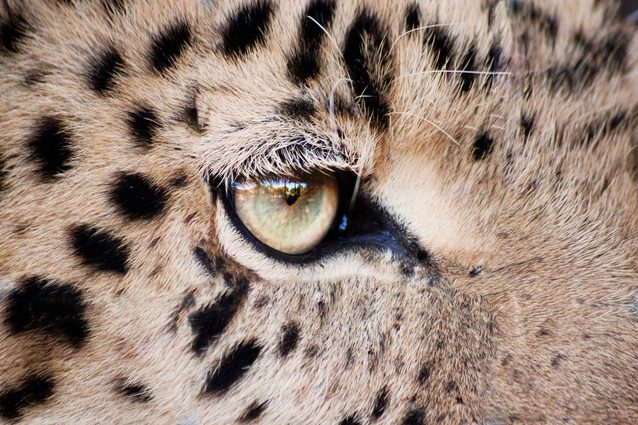 Taming in captivity
Taming in captivity
Anybody involved in the study of cheetahs, the fastest sprinter in the world, would readily agree that pet cheetah is not a new phenomenon. People have been keeping cheetahs as pets and for various other reasons for thousands of years. Legendarily, Sumerians were the first experienced and able cheetah tamers who have kept them in captivity for around 5,000 years. Villagers in the 16th century used to domesticate, train and use them to hunt for food. In Libya, during the reign of kings, and in Asia, before the Assyrian dynasty, cheetahs were used for hunting sports. During the 17th century, they were considered allies to humans, particularly in the war field.
Royal keep
There are historical records indicating that despite their fierce appearance, emperors, royalty and historical figures once kept cheetahs as pets. Rumour has it that during the 16th century, Akbar the Great had a vast collection of over 30,000 cheetahs in his palatial court during his 49-year regime, and these are more cheetahs than in the wild today. Moreover, people in ancient times believed that cheetahs could carry the spirit of a dead person much faster than it would otherwise take to get to afterlife. Besides superstitious beliefs and keeping them as pets, kings, emperors and pharaohs usually wore their fur. Consequently, they were poached, killed and skinned to make beautiful coats for these royalties. As a result, cheetah dealers, trappers and tamers were highly recognized and regarded as well paid jobs. Cheetahs were also the companions of the high profile and the rich because they were considered a status image among the wealthy. Historically, people kept cheetahs as pets not only for these reasons but also because they thought spending time with these beloved animals was a fun activity. This treatment and usage of cheetahs may have something to do with the fact that by far, out of the entire exotic cat family, cheetah has been considered the easiest to tame and coach.
In modern times
Fast forward to recent days, and we get a very bleak picture of cheetahs with a disappointing long-term prognosis. According to National geographic, the average lifespan of this sleek and beautiful cat is around 10 to 12 years in captivity. Cheetahs show no hostility towards people due to their highly friendly nature. Presumably, this might be the reason why in ancient times people managed to tame and train cheetahs as hunting companions. As a consequence, capturing these animals started increasing even among lay people. The first phase of taming lasted several weeks, in which the animals were kept tethered and were forced to get used to humans. The next step included tempting them with food by slaughtering animals in front of them to stimulate its hunting instincts. Taming the cheetah lasted one year until it was ready to hunt without hurting the owner.
Difficulty in taming
Many wealthy people are interested in keeping cheetahs as personal pets. But they are ignorant and lack the information needed to domesticate them. Many are even uninformed about what an exotic pet is as they are considered to be very controversial. However, cheetahs by definition do qualify as exotic pets. Although cheetahs are not as dangerous as other cats, domesticating the animals is incredibly difficult. It takes thousands of years of taming by experts to make them domestic pets. People have been killed or seriously injured trying to interact with cheetahs. Hand raising them and treating them like cats and dogs does not make them safe either. Even if they have been brought up from a young age, news reports abound of their attacks.
Diet and nutrition
Cheetahs have specific nourishment needs. Those cheetahs that are hand-reared are prone to nutritional deficiencies. They need the vitamins in addition to the appropriate calcium and phosphorus ratios in their diet. They must also have special diets that address their nutritional needs. Otherwise, they will be malnourished, which they often suffer from. The mother cheetah’s poor nutrition will also affect the cubs. Many cheetah owners end up feeding them prime cuts of meat or cat food, which cause health problems. The carnivore diet should consist of the whole prey including bones to prevent calcium deficiency and occurrence of other dental problems that can become life threatening over time. In addition, their welfare is enhanced if they can see their natural prey.
Lifestyle
Just like other pets, cheetahs are in need of their particular stimulation and environmental enrichment. Exercise is also important. Cheetahs in captivity will not reach their top speed due to a lack of conditioning. However, it is important to provide them opportunities for quick-burst running.
Breeding
Cheetahs live on an average for about 8 years in the wild. But more often than not, they are poached in the wild to make babies for the pet trade. Infant mortality is very high as well due to various factors. On the other hand, in captivity, they can live for as long as seventeen years. However, when it comes to breeding cheetahs in captivity, studies have proven that it fares much better in the wild than in captivity. Only around 44% of the attempts to breed cheetahs have succeeded. Cheetahs need space to produce. Small enclosures are linked to hamper breeding success and lower male fertility. Cheetah’s living areas should be vast and concrete structures. Breeding these solitary animals requires knowledge of the mechanisms that entice them to produce. Females and males must be isolated from each other to encourage breeding. When males are ready to mate, they must be in the enclosure where there has been a female. If he exhibits signals of wanting to breed, then she will be introduced. All of these require luck, many large enclosures and good animal sense. On the contrary, the breeding facilities are often horrendous. Usually, they resemble factory farming where cheetahs are kept in tiny cages and bred over and over. Also, the traditional zoo environment is noisy and too stressful for successful breeding efforts.
Integration
Most professionals understand the inadequacies of hand-rearing big cats in captivity if they plan to release the animals into a natural setting eventually. Pets are weak candidates for successful integration. The wild cat’s critical development entails necessary changes that adapt them to wild living. A pet cheetah is not privy to this living.
Rewarding pet relationship
While it is certainly fun to raise a cheetah as a pet, obeying regulations and taking precautions can establish a rewarding and fulfilling pet-owner relationship. Following the local and state laws is the number one consideration to make. Cheetahs have natural instincts that make them unpredictable. Hence, it is prudent to exercise caution while handling them. The living facilities should have ample space, as cats can be very destructive due to their sharp teeth and claws. Find a local veterinarian as health and medical care is essential for its well-being. Also, the vehicle used to transport the cheetah to the vet must be appropriate if the vet cannot make house calls. Besides, cheetahs consume massive amounts of raw meat daily, and this can become quite expensive. So, the owner should look into the financial feasibility before owning a cheetah.
Limitations as pets
Cheetahs belong in the wild. They are not domesticated pets. There are certain limitations when bringing up cheetahs. The extremely poor breeding success makes them unsustainable as domestic animals. Hence, they rarely make it to three years in captivity. Caring for cheetahs is unlike that of a domestic animal. Moreover, as invasive animals, they are a danger to clueless pet owners. Being forced to live in captivity can lead to extreme stress as it prevents them from exhibiting natural instincts. And out of this frustration, cheetahs can often become destructive and may cause havoc. Urine spraying is one such behaviour. Also, stress may cause the mother to cannibalize their young or abandon them. One of the many reasons it is not advisable to keep cheetahs as pets is the amount of care they require. People who buy a cheetah do so without understanding the cost of feeding it. People do not have the knowledge or resources to properly take care of them, who often suffer from physical, emotional and nutritional problems. Cheetahs run for miles in their habitat, leading the pet owners to resort to ridiculous measures, such as putting them on a treadmill. Cheetahs can also carry parasites, bacteria and viruses causing diseases to human beings. Thus, unfortunately, it is not in the best interest of the cheetahs as a whole to keep them as pets.
Alternatives to owning
There are options for people who dream of owning a cheetah. African servals are cheaper and smaller wild cats which resemble cheetahs. They are not a threatened species in the wild and have captive-bred sustainable populations. However, these animals require an owner who is willing to provide an outdoor enclosure in addition to enduring possible house destruction. African servals are legal without special permits in some states, but it is advised to check first with the local city, county or neighbourhood association. Also, there are domesticated cat breeds such as the Egyptian Mau. If everything fails, the best way to experience cheetahs is to volunteer at a zoo.
Private ownership fetish
Smuggling of cheetahs into the Gulf States has been increasing. Booming wealth combined with popularity of social media in the Gulf States has fostered the trade. Wealthy Arabs in the Middle East relish in having a cheetah. They think having a cheetah makes them look important. People boast about owning these exotic pets. These cheetahs are obtained both legally and unlawfully, bought at auctions or found in the wild. Wildlife Trade Cheetah Conservation estimates that illegal market for pet cheetahs in Saudi Arabia, Kuwait, UAE and Qatar includes a steady supply of 300 cubs a year.
UAE – a case in point
Until recently, cheetahs had become luxury pets in the United Arab Emirates, whose owners pose with them or stage them for photo ops in fancy cars. There are even reports of cheetahs being taken outside in the major cities. Perhaps even worse are videos and pictures of children playing with cheetahs. Such irresponsible behaviour leads people to believe that these feral cats make great family pets. But they do not. This exposure is what fuels exotic pet trade that snatches animals from their natural habitats. Even if it is legal to buy captive-bred cheetahs, it is likely that the captive breeders in the country have originated from illegitimate means. Interestingly, some people took pride in obtaining them through illegal methods. Vets had seen many sick and diseased cubs in pathetic conditions. The dead cheetah’s autopsy often revealed that they died from accidentally drinking anti-freeze or from poor nutrition.
UAE succumbs to pressure
In 2011, the emirate of Ajman banned owning exotic pets, wild animals and reptiles. The emirate of Sharjah followed suit and in 2014 made it criminal to possess and trade exotic wild animals. Eventually, on the 4th of January 2017, United Arab Emirates as a country on the whole outlawed private ownership of wild animals, including cheetahs, after mounting pressure from animal welfare groups. Now, the national law forbids trade of exotic pets not only in Ajman and Sharjah but also in each of the seven emirates. Under the ruling, even breeding wild animals is punishable. The ban is due to ill-informed purchases of animals, which has often led to negligent abandonment and poor welfare of the cats. The new law stops individuals from walking around with a cheetah and other fat cats on a leash. Animals can only be kept in wildlife parks, zoos, circuses and research and breeding centers. Under the new law, penalties for those who break the law include substantial fines and a jail term of up to six months. The new law is a victory for animal advocates who speak up for wild animals that are trafficked only to show up on social media. Conventional pet owners will also be affected. They must show a permit and keep them on leash when in public.
Kuwait – a case in point
In Kuwait, owning exotic wild is illegal. But the Kuwaiti law regarding prevention of possession of wild animals seems broad and vague, lacking strict penalties against the criminals. Jaber from Kuwait City bought both Shahad and Mark, two African cheetahs, in 2013 and 2014 respectively for $3,000/- each from an active network at Kuwait International Airport that smuggled them from Africa. She purchased them when they were a few months old. Jaber spends $350/- a month for their food and care. She keeps the animals in a cage in the basement of the building most of the time but sets them loose daily for a while. In another incident, a lion mauled a Filipina maid that died a few days later from the wounds. Her death provoked considerable outrage across Kuwait. A friend of the employer, Mohammad, claims that he hid the animal but was afraid of giving the lion to the authorities and implicating the owner. So, he took the lion to the desert and shot it.
Gulf States
In general, Gulf States do not forbid exotic pets. Or if they do, the laws are very lax and not as strict as other countries. Cheetah pet trade will continue as long as they do not impose stringent measures.
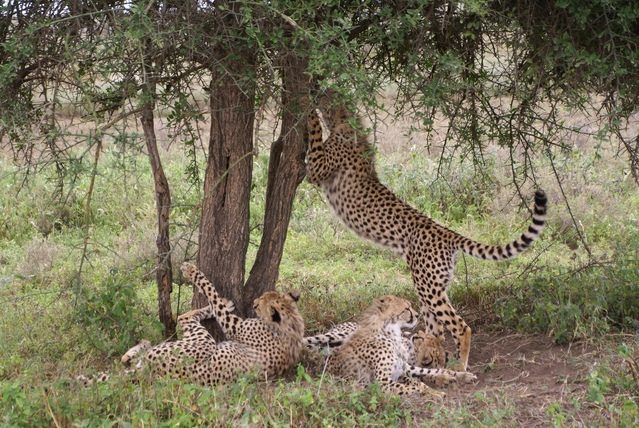 Existential threat
Existential threat
Wildlife biologists are doubtful whether cheetah can outrun extinction. Threats to the animal’s survival are hard to measure. However, an expert team from the Zoological Society of London conducted a study compiling the most comprehensive data set revealing that the population declines of cheetah numbers are more drastic than was previously recorded. They also claim that the situation is much worse off than is claimed. The study reckons that today cheetah is Africa’s most endangered big cat species. According to a mathematical model created by the team, if the population of cheetahs falls by even just 10 percent on an annual basis, then the numbers would decline by 50 percent in 15 years. Breeding programs have been established in cheetah-populated areas to reverse this trend. The results seem promising in some places but not so much in others. Time will tell. However, if what the team predicts comes true, then it is worth doing a wildlife safari in Kenya to watch these remarkable creatures before they get wiped out from the face of the earth.
Conservation projects
Throughout the range of cheetahs, projects are working to conserve these few remaining beautiful creatures. Mara Cheetah Project and Cheetah Conservation Fund are the two cheetah conservation projects in Kenya.
1) Mara cheetah project
Majority of the efforts and research published on cheetahs come from Namibia, Tanzania and Botswana. At the time of writing this, Kenya has only published two peer-reviewed research about cheetahs. Hence, in-depth information about these animals in the country is very scant. As a consequence, a team of scientists at the University of Oxford, the Kenya Wildlife Trust and the Indian Statistical Institute formed a new initiative called Mara Cheetah Project to address the problem. Its objective is to identify the threats faced by cheetahs in the Mara, establish the number of cheetahs and, where possible, mitigate the risks. The project uses a research-driven conservation approach. It relies on a combination of ecological research, long-term population monitoring and community-based conservation. Based on these, the two areas of study – Mara and Meru – experience various types of anthropogenic influences.
Mara
Maasai Mara national reserve towards the south west of the country is one of the most favourite tourist destinations with high tourist activity and no livestock grazing. It boasts abundant vast plains and wildlife. It is also famous for its high densities of predators and annual wildebeest migration. The project team extensively covered the Mara National Reserve and surrounding wildlife conservancies during a three-month period. Each cheetah was identified and photographed using its unique coat pattern, which is just like the human fingerprint. The collected data were then analyzed using a statistical model. This technique is stronger than all other previous methods used. It enabled the team to monitor and count the cheetah population in the Mara effectively. The study showed that there is an average of 30 adult cheetahs in Maasai Mara. The system also helped assess potential conservation interventions and determined the magnitude of any pressures. As a result, they were able to alleviate some of the survival risks. Education, capacity building and community involvement are central to the conservation efforts of the Mara cheetah project.
Meru
Meru conservation area, on the other hand, is one of the remaining true wilderness regions in Kenya with little tourist visitation and high grazing. It is a mosaic of geomorphologic landscapes characterized by varying vegetation cover including acacia wooded grassland, shrub land, bush land and riverine forests as well as overlapping climatic zones. The cheetahs in the dense vegetation in Meru demonstrate behavioural and ecological flexibility. For example, for small animals such as tree hyrax, dik-dik and velvet monkey they use “leopard-style” hunting, whereas for slower and bigger prey they employ group-hunting techniques. The project team observes and tests stress hormone levels from fecal, tissue and blood samples of cheetahs in Meru. Such data allows the project to determine parameters such as the number of births and deaths, densities, disease prevalence and ranging behaviour. With these facts, the team can provide more information on their survival strategy in the thick vegetation as well as in varying ecological conditions. These studies are essential for the conservation of cheetahs and for preserving their habitats.
Community engagement
The team discourages community people from using poisons to kill cheetahs through their anti-poisoning campaigns. They engage children in creative activities during their school visits. The hope is that through building tolerance and understanding, there is a chance that humans and cheetahs can continue to live together in this magnificent ecosystem.
2) Cheetah conservation fund
In 1990, Dr. Laurie Marker founded Cheetah conservation fund to save the cheetahs in the world. The organization has created a set of integrated programs using its research as an underpinning aimed at addressing the threats not only to cheetah and its ecosystem but also to the human populations. The programs are rooted in scientific research papers on the biology, genetics and ecology of cheetahs that are published in journals annually. The conservation fund organization operates the only fully equipped lab facility in Africa. It operates from the belief that only by securing the community’s future that lives alongside the animal can you protect a future for the cheetah.
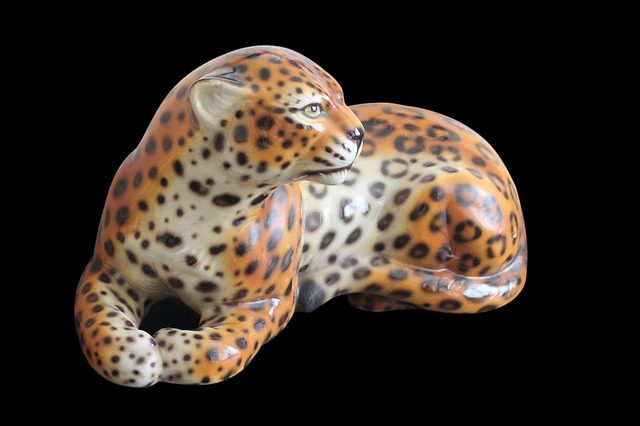 Cheetah-inspired tools
Cheetah-inspired tools
Robots are stronger and smarter than humans. They can lift thousands of pounds and perform millions of sums. A Pentagon-funded four-legged robot has set a new speed record proving that it can run faster than the fastest man, Usain Bolt. The quadrupedal machine named Cheetah built by master roboteers Boston Dynamics not only beat Usain Bolt’s record setting time but also topped its previous high speed. The engineers have refined the leg control algorithms and increased its power. But the company is looking to change even that, and soon. The robot-makers have been working to improve the coordination of back and legs so that they can develop a better control system. The next step is to erect an untethered version, one with operator controls and an onboard engine that works in 3D. Although it may sound a little outlandish, Boston Dynamics’ earlier version, BigDog quadruped, could haul 400 pounds. The company also has Petman, a biped, which looks like a human, minus the head. The legs of these biologically inspired robots can carry machines across such terrain that would leave tracks or wheels stuck. They could also perform civilian and military rescue missions in rough terrain.
A fun fact about cheetah
The name cheetah comes from the word chita, which in Hindu means the spotted 1. Another fun fact is that in the past, it used to swim, but it does not like to, and much prefers to be on land. And there is much more odd data about the way of life of cheetahs in the wild.
To receive a colourful digibook about cheetah with videos, images and text, please fill out the following form or simply email us on safaris@safari-center.com

